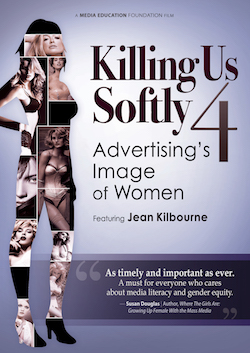 I am not going to lie, I had a hard time choosing a chapter to read. I spent a lot of time looking at the titles, choosing one that I thought sounded interested, reading the first few lines and then changing my mind. Here is the chapter I finally settled on: Seventeen, Self-Image and Stereotypes
I am not going to lie, I had a hard time choosing a chapter to read. I spent a lot of time looking at the titles, choosing one that I thought sounded interested, reading the first few lines and then changing my mind. Here is the chapter I finally settled on: Seventeen, Self-Image and Stereotypesby Bakari Chavanu. I guess I was feeling like I needed some more information about how our culture and the media shape our views and how important it is to teach people (not just students) to look at it thought a critical lens.
In this chapter, a high school teacher works with his 11th grade students to do just that. The class participates in a 7 week unit around media literacy in advertising. His goal is to "help students consider more critically the role and influence of medial, particularly the pervasive and intrusive nature of advertising, and how it conveys certain values, messages and ideas that often perpetuate sexist, racist and pro-capitalist points of view." (p. 24)
He began the unit with a self assessment of media interests and habits. He used a resource titled "What's Wrong with Advertising?" and then he had his students perform satirical skits. This is a great way to have the students begin to look critically at advertising. By having the students act out the stereotypes they identified, it brings it to life, allowing the students to really tap into their creative side. In addition to the skits, the class also watched and critiqued TV commercials, questioning the everyday adds as they watched. Sometimes the commercials were presented without sound to help the students begin to understand the underlying messages and then to see the powerful role the music, editing and voice-over have when media is "influencing our values and decisions as consumers".

Some students were resistant, claiming that the media had no influence on them. They were challenged to name their favorite car and to no great surprise, they all names cars that were advertised in the commercials they were exposed to on a daily basis. This illustrated to the students that very often we are not even aware of the biases that we are internalizing because they infiltrate our daily lives so seamlessly.
The work with commercials prepared the students to watch watch Killing Us Softly 4: Advertising's Images of Women, a "humorous analysis of how images and ads shape our values."
I think it is important to note that media teaches us what is considered "normal" and "good" and it is sad to say that we are part of a "culture in which one out of five women has a serious eating disorder, where adolescent girls increasingly have problems with low self-esteem, and where blacks, especially women, have historically had serious problems and prejudices concerning lightness and darkness of their skin".
This chapter gave some concrete examples of activities that teachers could incorporate into their current classroom curriculum to help students begin to develop the critical questioning skills that they need when they are consuming or producing media.
I almost read this article as well before finally deciding to read "Beyond Pink and Blue." The teacher's work with the class to unravel all the ways media influences us demonstrates perfectly how many times we are not even aware of it. I remember watching the video trailer for Killing Us Softly 4 and being stunned at the way they edited everything. We know they are modified, but not that much, and it just goes to show how many times the media sets us up with unrealistic expectations.
ReplyDelete